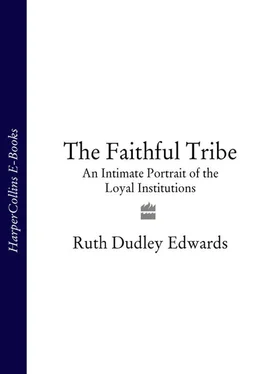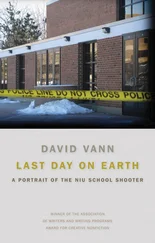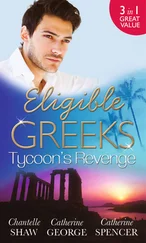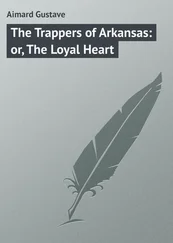Now a friend was taking Gary and Paul and me to a day that a lot of parade-connoisseurs regard as the best spectacle in Northern Ireland: the annual parade of the Armagh Royal Black Preceptories and the Sham Fight.
A Black event is prized by all of those who want to see the loyal institutions at their most disciplined, dignified and responsible. And because of the nature of the Black, a far smaller portion of the bands are ‘blood-and-thunder’. So it’s a splendid outing for accordion, pipe and silver bands. (One of the pleasures of a parade is to see someone I have met socially appear completely transformed. I remember gentle, slightly diffident Eric suddenly appearing in front of me resplendent in his kilt and bagpipes, exuding joy and pride in his band and his community.)
The problem with Scarva is that it has become too popular and the lane down which the parade goes is narrow. If you want to walk along with a band, you have to do so behind the families sitting in their folding chairs or on their blankets, swigging soft drinks and munching sandwiches and cake. Scarva is a bit too respectable and tame to attract yobs although there is sometimes a bit of trouble from the small lager-drinking brigade.
Our day was complicated by my needing to have a word with James Molyneaux, the Imperial Sovereign Grand Master, who was leading the parade. ‘We’ll go through the fields,’ announced our country friend, and took off at speed to lead us over barbed-wire fences and thorn-hedges and across boggy land and through muddy puddles to find Molyneaux before he disappeared into Scarvagh House to dine with the dignitaries. When we finally made it via the back route into the field, it was already full of stalls and Blackmen and bands and families. There was no sign of Molyneaux and the platform was deserted. So I had to climb over yet another fence and go to Scarvagh House.
By this time the Sham Fight between King James II, the loyal institutions’ hate figure, and their hero, King William III, was in train. It is a bizarre and rather touching event, given an emotional context because there is an oak tree in the grounds under which William is supposed to have camped on his way to the Boyne. The following year, when I actually walked the route more or less backwards about twenty yards in front of the parade, I was highly diverted that the leading marshals were a King James and a King William in vaguely period uniform, in green and red respectively, adorned with tricorne hats with appropriate cockades. It rather takes away from the mystique when the two great enemies are engaged in moving bystanders out of harm’s way, but then, except for a little ritual in Orange lodges, mystique is not much prized in that part of the world.
What happens at the Sham Fight is that, when everybody has arrived in the field, King William and his main henchman General Schomberg on the one hand, and King James and General Patrick Sarsfield on the other, appear on horseback to thunderous applause followed by motley footsoldiers more or less dressed for the part. After riding round and round for a while, the kings and generals, still on horseback, fight each other with swords while their followers use swords, pistols with blanks or just generally tussle. The fight – which is supposed to represent the four Williamite Irish battles: Derry, Enniskillen, Aughrim and the Boyne – rages enthusiastically all round the field with much gunshot, shouting, laughter and cheering. By the end of the fight, James’s standard has been destroyed, William’s is held high and James runs away.
That year I couldn’t see a thing. The following year I got the hang of it when I was allowed on the platform. But what I did have was access to the Scarva joke, for I was marooned for quite some time outside the house where Molyneaux was eating, with a Black marshal who was very fond of it. It runs: ‘Who won?’ (or, as he pronounced it, ‘Hee wan?’), a question he addressed to me and about half-a-dozen different people over the next twenty minutes amid his chortles of delighted laughter. I learned that the accepted response is something along the lines of, ‘I don’t know. I’ll have to ask.’
As a spectacle, the Sham Fight is a bit amateurish. ‘They really should call in the Sealed Knot,’ observed a journalist the following year, alluding to a collection of military history buffs who refight the battles of the English Civil War with great attention to accuracy and expertise. But that kind of professionalism would spoil the fun. The Sham Fight is put on by local people for their neighbours and, like them, it is without pretension. It is a homely and reassuringly familiar occasion.
The marshal had been rattled by my request to see Molyneaux, not so much because he was Imperial Sovereign Grand Master and retired Ulster Unionist Party leader, but because he was having his dinner. He was so shocked at the notion that a man might be distracted from feeding even by being passed a message saying, ‘Can I see you when you’re free?’, that though he was a friendly and obliging man, it took half an hour before he could nerve himself to do the deed.
I eventually talked and laughed a bit with Molyneaux, whose public image is dour, but who is a gentle wit, in the hallway of the Victorian house, the light filtering through the stained-glass window representing King William on a white horse; then he and his colleagues decamped to the platform to say prayers, sing hymns, make sensible speeches and move moderate resolutions.
The men were dozing on the grass when I got back. We stayed long enough to listen to Molyneaux’s part of the proceedings and then went off and had some foul hamburgers. Paul looked around the field and pronounced that, apart from the regalia, it was exactly like an English agricultural show. We left early, because if you don’t get back to your car ahead of the parade, it is possible to be stuck behind cars and coaches for an hour. And after all that fresh air and blameless activity, we badly needed beer.
5. The Apprentice Boys, 10 August 1996
I had gone to Derry * the day before with Paul, who had become a parade aficionado, to sightsee and look at the route that was causing such massive arguments. For the preceding weeks and months, horse-trading had been going on to try to gain the agreement of the Bogside Residents’ Group (BRG) to a walk along the city walls by the Apprentice Boys as part of their annual commemoration of the siege of 1689. The institution reveres the thirteen apprentice boys who defied their elders and closed the gates to keep out King James’s army.
Derry is not just the Mecca of the Apprentice Boys, it is their raison d’être. It is a cruel irony for them that it is now almost wholly in nationalist hands: of the 60,000 inhabitants of the city, only 1,500 are Protestant, and they feel vulnerable to what they believe is a policy of ethnic cleansing.
Times were tense. A month before, the volte-face on Drumcree had led to full-scale riots, complete with petrol bombs and plastic bullets, leading to the death of one protester. Alistair Simpson, the Apprentice Boys’ governor, had worked tirelessly to reach agreement with the residents’ group. Unlike the leaders of the Orange Order, who refused to negotiate parade routes with convicted terrorists, he had agreed to meet the leader of the BRG, Donncha MacNiallais.
Simpson and his colleagues had offered various concessions about numbers, about not playing any music as they walked on the part of the walls that overlooked the Bogside, and, in desperation, had suggested that screens be erected so that no Bogside resident would have to see the Apprentice Boys and barbed wire be put in place to ensure no Apprentice Boy could approach the Bogside even if he wanted to. Even so, agreement had proved impossible. As a reporter in the Sinn Féin organ An Phoblacht/Republican News put it: ‘They [the BRG] sought an overall accommodation with the Apprentice Boys involving the acceptance of the principle of consent for all contentious parades, wherever and by whomever they were organized. This the Apprentice Boys were unable to deliver, and talks broke down over the issue.’ From Simpson’s point of view, MacNiallais had moved the goalposts beyond reach.
Читать дальше












